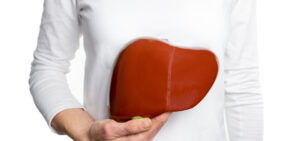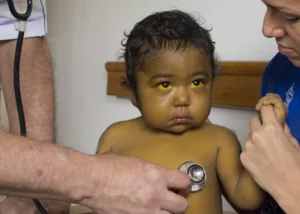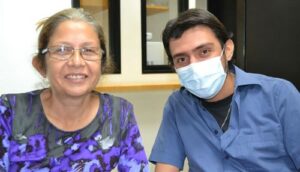Although Crohn’s disease does not occur directly in the liver, it is important to take it into account since its symptoms such as inflammation of the digestive tract and malnutrition can affect the aforementioned organ.
Crohn’s disease is a type of inflammatory bowel condition which causes inflammation of the digestive tract. It can also cause abdominal pain, severe diarrhea, fatigue, weight loss and malnutrition.
The inflammation can affect different areas of the digestive tract depending on the individual. Crohn’s disease can be painful and debilitating and, in some cases, can lead to life-threatening complications.
Although there is still no cure for this disease, there are therapies that help reduce symptoms. Even long-term remission and bowel inflammation can be achieved.
What are the causes of Crohn’s disease?
The exact cause of Crohn’s disease is unknown. It is a condition that occurs when the body’s own immune system mistakenly attacks and destroys healthy body tissue (autoimmune disorder).
When parts of the digestive tract remain swollen or inflamed, the intestinal walls become thickened.
Factors that may cause Crohn’s disease are:
- Genes and family history (people who are white or of European Jewish ancestry are at higher risk).
- Environmental factors.
- The body’s tendency to overreact to normal bacteria in the intestines.
- Smoking.
- Occurs frequently in people between the ages of 15 and 35.
Signs and symptoms of this intestinal disease
This Crohn’s disease commonly manifests with the following symptoms:
- Chronic diarrhea with abdominal pain
- Fever
- Anorexia
- Weight loss
The abdomen may hurt on contact, and a mass or busy area may be palpable.
Gross rectorrhagia is unusual, except in isolated colonic disease, which may have manifestations similar to those of ulcerative colitis. Some patients debut with an acute abdomen simulating acute appendicitis or intestinal obstruction.
About 33% of patients have perianal disease (especially fissures and fistulas), which is sometimes the most noticeable or even the initial manifestation.
In children, extraintestinal symptoms often predominate over digestive symptoms. Arthritis, fever of unknown etiology or growth retardation may be a presenting symptom.
In case of recurrent disease, symptoms vary. Pain is very frequent and appears with both simple recurrence and abscess formation.
Patients with severe exacerbation or abscess are likely to present with marked pain on palpation, defensiveness, pain on decompression and general toxic appearance.
Stenotic segments may cause bowel obstruction, with colicky pain, bloating, constipation and vomiting.
Adhesions from previous surgeries can also cause intestinal obstruction, which begins rapidly, without the prodrome of fever, pain and general malaise typical of obstruction secondary to exacerbation of Crohn’s disease.
An enterovesical fistula may cause air bubbles in the urine (pneumaturia). There may be secretory cutaneous fistulas. Free perforation into the peritoneal cavity is uncommon.














